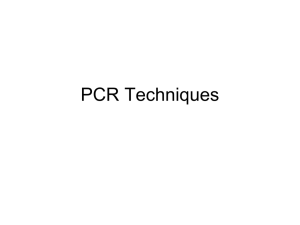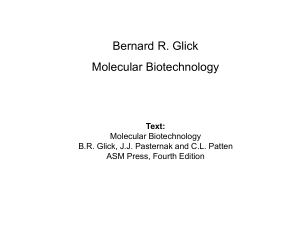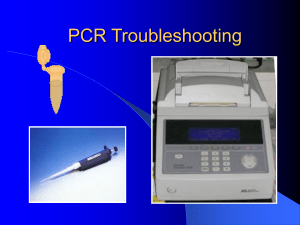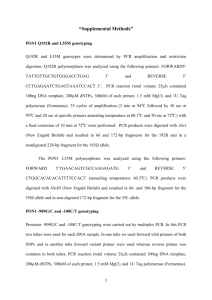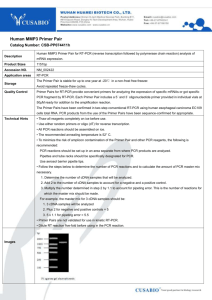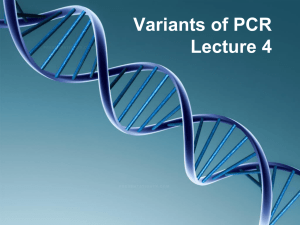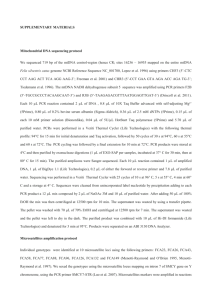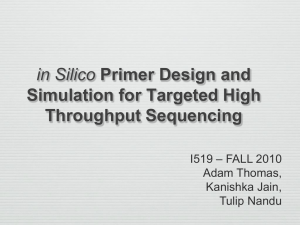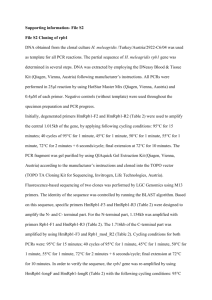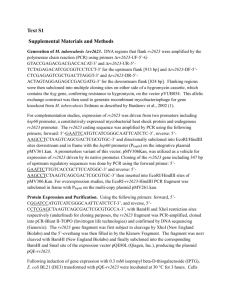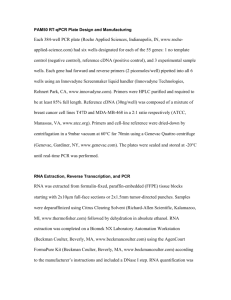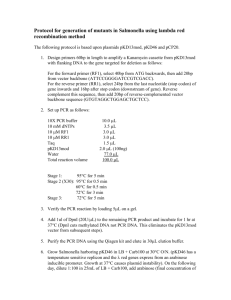PCR Techniques
advertisement
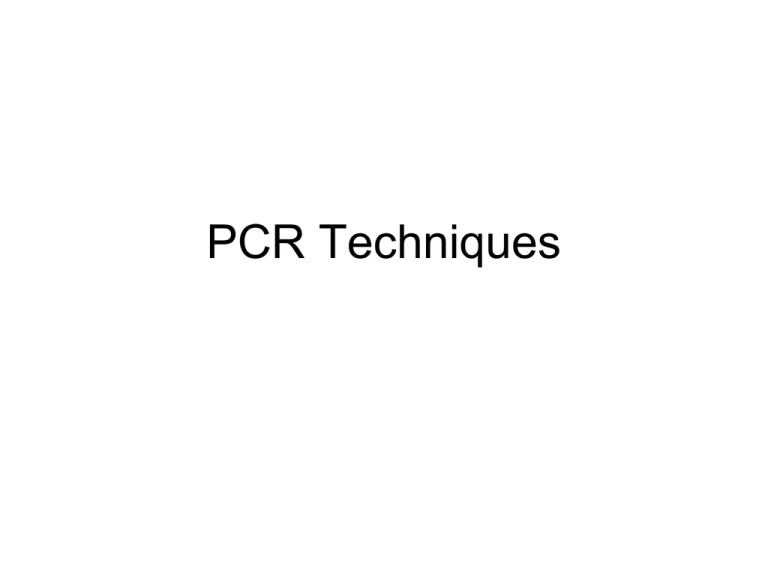
PCR Techniques Basics of PCR • Primers – – – – – • 15-60bp (60bp is limit synthesized by IDT) Annealing temp ideally >55C (portion that anneals to your template) Hairpins Tm<50 ? Self dimers---only important if they are 3’ annealing dimers Silent mutants---better to have them on 5’ end than on 3’ end Cycles – Denature • – Anneal • • – Standard is 5C below Tm of primer (the portion that anneals to your gene) Can do gradient on our thermocycler Extend • • Can be extended in GC rich templates 68-72C Polymerases – TAQ—faster and better at amplifying long genes • • – PFU—slow but provides proofreading • – Adds a A to sequence Error prone Used for mutagenesis primarily TAQ:PFU mix—qualities of both Touchdown PCR—can be applied to mutagenesis • Start with annealing temp greater than or equal to your primer Tm (I usually do 2C over) • Decrease annealing temp each cycle – 1C or 0.5C • Continue decreasing until annealing temp is 510C below Tm • For remaining cycles maintain low annealing temp or go back up (if your primer has 5’ extensions) Basics of mutagenesis • 20-25bp flanking mutation • Linear amplification • Primers need to anneal to each other with reasonable Tm (>50C ?) to allow E. coli to fix plasmid Long insertions/mutations • Primers don’t have to be complements of one another • 3’ end anneals to template • 5’ end is insertion (allows for up to 40bp insertion) • For reverse primer: 5’ end is complement of insertion and 3’ end anneals to other side of insertion site Megaprimer mutagenesis • What if you want to insert >40bp and up to 2kb (largest we’ve successfully done) • 1. Do PCR of your gene – 5’ extensions on your primers that are complementary to your vector • 2. Gel Extraction • 3. Do mutagenesis reaction – Substitute 500ng PCR product for primers Fusion PCR • What if you want to join two genes together (or a promoter with a gene) • Can use megaprimer mutagenesis and clone genes in one at a time • 1. Design internal primers that have 5’ overhangs that are complementary to fusion gene (Tm>55) • 2. Do PCR of each gene individually • 3. Do gel extraction kit • 4. Add small amount (0.1ul) of each pcr product into another PCR reaction with only the forward primer of the first gene and the reverse primer of the second gene • 5. Do normal pcr with this mixture (make sure to account for the Tm of the overlap region) Gene synthesis • Overlaping primers (3’ overlaps) – Analogous to fusion pcr – Can synthesize fragments if whole doesn’t work, and sew together – Setup reaction with very small (<0.1ul) of middle primers and 1ul of outer primers) – Normal PCR • http://genomes.urv.es/OPTIMIZER/ Example 1 • You receive a vector containing cDNA for protein X in a T7 expression vector---you want it His/TEV tagged • Options? Example 2 • You are expressing a protein in yeast via a vector and want to change the promoter type for overexpression • Options?

